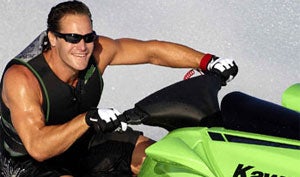Inside Personal Watercraft Off-Throttle Steering Solutions
We look at how it works and why it was introduced
Once a bold new idea, off-throttle steering systems have become commonplace in today’s personal watercraft. Originally conceived as a solution to the loss of steering control when thrust stops flowing through the pump — such as when a panicked rider releases the throttle and attempts to make an abrupt turn to avoid an object in their path — OTS systems began to appear across all major PWC manufacturer’s lines around 2003.
The motivation behind their appearance can be traced to calls from the Coast Guard and National Transportation Safety Board for a solution to a PWC’s lack of directional control once thrust was removed. Those calls were spurred by a 1998 NTSB study that found most PWC fatalities were not the result of drowning, but instead blunt force trauma — the type of accident that results from a collision with another boater or fixed object. As PWC essentially lost most directional control once a driver released the throttle, manufacturers agreed to work on a solution that would return some minimal level of control to the driver and help avoid a collision.

Eight years later, the solution — off-throttle steering — is now taken for granted by most PWC consumers. Many may not even realize their craft have the capability for good reason. The inclusion of OTS into most craft is relatively seamless. The system works by detecting two coinciding occurrences, the abrupt release of the throttle and a full turn to port or starboard. Electronic sensors note the two situations, and respond by increasing RPM just enough to once again push some water through the jet nozzle. That small blast of propulsion is just enough to start the craft turning in the direction the driver has turned the handlebars, hopefully allowing the craft to begin an evasive maneuver and avoid the object in the craft’s path.
 Sea-Doo’s O.P.A.S. system uses mechanical rudders to help steer the craft.
Sea-Doo’s O.P.A.S. system uses mechanical rudders to help steer the craft.
Kawasaki, Sea-Doo and Yamaha all continue to use off-throttle steering (OTS) systems. Sea-Doo previously added another element to the mix in many of the company’s models, Off-Power Assisted Steering (O.P.A.S.). O.P.A.S. used mechanical rudders, located at the aft portion of the hull, which were tucked out of the way during normal operation, but dropped down into the water when throttle was released. Water pressure siphoned off the pump kept them in the retracted position underway; when that pressure was removed, the rudders dropped into the water. A linkage to the steering nozzle allowed them to pivot in conjunction with the handlebars, providing directional control much like a sterndrive or outboard engine’s skeg. The primary advantage touted by Sea-Doo was obvious — the system would work even should the engine stall or the driver accidentally pull the lanyard. The craft did not have to be under power for the system to respond.
 Though OTS systems have become essential, nothing beats knowing how to properly handle a PWC in all situations.
Though OTS systems have become essential, nothing beats knowing how to properly handle a PWC in all situations.The O.P.A.S. system has now essentially been replaced by the brand’s Intelligent Brake and Reverse system, which arrests a good deal of forward thrust by redirecting the flow of water through the pump.
While off-throttle or off-power solutions are indeed beneficial, especially to newer riders who aren’t as familiar with a watercraft’s operation, they’re no replacement for learning proper handling and riding technique. Yamaha has long made little mention of the system in their boats, preferring to educate a driver on proper driving habits. A PWC can still turn quicker and sharper if a skilled driver keeps the craft under power, and uses that control to power through a sharp turn away from a potential collision.
In short, OTS or O.P.A.S. systems are nice to have, and it’s essential an operator understands their use. But nothing beats good old-fashioned knowledge of a PWC’s operation — and plenty of time in the saddle.
Related Reading
PWC 101: Safety
PWC 101: Handling
PWC 101: Getting to Know Your Craft
How To Properly Store Your PWC Fuel for Winter
How To Tie Secure Knots for Your PWC
Get PersonalWatercraft.com in your Inbox!
Like PersonalWatercraft.com on Facebook
Comments
Most Popular

2025 Yamaha JetBlaster PRO 2-Up Review

2024 Kawasaki Jet Ski STX 160X Review

Remembering the Sea-Doo XP

Whatever Happened to the Wetbike?

2025 Yamaha JetBlaster Review












 Your Privacy Choices
Your Privacy Choices